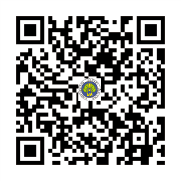Analisis model antrian pada sistem single channel multi phase di kantor Satpas Polres kota Probolinggo
Abstract
Queue is a problem that mostly occurred in public service facility such as Driving License (SIM) renewal service in Satpas (Driving License Administration) Office of Probolinggo City Police Station. For applicant that want to do SIM renewal must go through three steps: applicant comes to do registration in registration counter with submitting form and all requirements, then wait until the applicant is called by counter officer of file checking and do the payment, next the applicant waits to be called by officer to take photo for Driving License Card. The aim of this research was to know queue model that suitable with applicant queue of Driving License renewal and to know performance from queue model that suitable with applicant queue of Driving License renewal in Satpas Office of Probolinggo City Police Station. This research used primary data that was obtained from direct observation to the arrival time and service time for Driving License renewal applicant that served in file checking and payment counter (step 1) and in room to take photo for Driving License (step 2). From analysis result and discussion, it was obtained queue model that suitable for step 1 and step 2, they were . In the step 1, the largest utility was on March, 11th 2016 for 96.05% with the average number of applicant to be served in the queue for 8 applicants, the average number of applicant to be served in the sistem for 9 applicants, the average time of waiting period for each applicant in the queue was 21 minutes, and the average time of waiting period for each applicant in the sistem was 23 minutes. In the step 2, the largest utility was on March, 12th 2016 for 94.20% with the average number of applicant to be served in the queue for 3 applicants, the average number of applicant to be served in the sistem for 4 applicants, the average time of waiting period for each applicant in the queue was 8 minutes, and, the average time of waiting period for each applicant in the queue was 10 minutes.
References
Aminudin. 2005. Prinsip-prinsip Riset Operasi. Jakarta: Erlangga.
Anthara, I.M.A. 2014. Analisis Sistem Antrian Gerbang Tol Pasteur Bandung di PT JASA MARGA (PERSERO) Tbk. Majalah Ilmiah UNIKOM 12 (1): 25-35.
Arikunto, S. 2013. Prosedur Penelitian. Jakarta: Rineka Cipta.
Asyari, S.I. 1981. Metodologi Penelitian Sosial. Surabaya: Usaha Nasional.
Bronson, R. & Hans J. W. 1996. Teori dan Soal-soal Operations Research. Jakarta: Erlangga.
Daniel, W. W. 1989. Statistik Nonparametrik Terapan. Jakarta: PT. Gramedia.
Dimyati, A. 1999. Operation Research Model-Model Pengambilan Keputusan. Bandung: PT. Sinar Baru Algesindo.
Djauhari, M. 1997. Statistika Matematika. Bandung: Fakultas Matematika dan Ilmu Pengetahuan Alam, ITB.
Hall, R.W. 1991. Queueing Methods. New Jersey: Prentice Hall.
Kakiay, T. J. 2004. Dasar Teori Antrian untuk Kehidupan Nyata. Yogyakarta: Andi.
Retnaningsih, S. M. & Irhamah. 2011. Riset Operasi Teori & Aplikasi. Surabaya: ITS PRESS.
Siagian, P. 1987. Penelitian Operasional Teori dan Praktek. Jakarta: UI Press
Siswanto. 2007. Operations Research. Jakarta: Erlangga.
Subagyo, P. dkk. 2000. Dasar-dasar Operations Research. Yogyakarta: BPFE.
Sugiyono, 2012. Metode Penelitian Kuantitatif Kualitatif. Bandung: Alfabeta.
Susiswo. 2008. Teori Peluang. Malang: UM PRESS.
Taha, H. A. 1997. Riset Operasi. Jakarta: Binarupa Aksara.
Downloads
Published
How to Cite
Issue
Section
License

This work is licensed under a Creative Commons Attribution-ShareAlike 4.0 International License.



1.png)
4.png)









